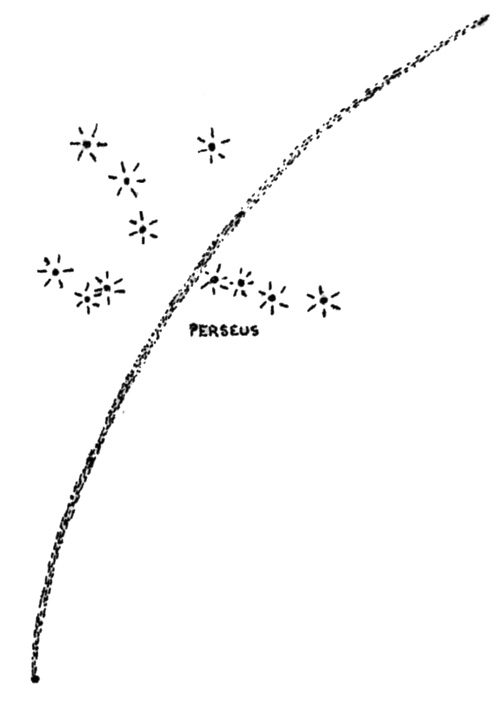

|
|
NATURE NOTES FROM ACADIA

Shortly after midnight, on August 12, we left Bar Harbor and made for the Cadillac Mountain road. The moon had set and the sky overhead was bright with stars. All indications were that this was to be an ideal night during which to observe the annual spectacular shower of meteors which streak across the northeastern sky in the general location of the constellation Perseus. Although this meteoric shower is observable some nights before as well as some nights after the date we had chosen, it seems to be at its best on the night of August 11-12. Half way to the summit we encountered fog banks and these only became more dense as we continued upward. On the very top the fog was quite heavy and we therefore decided to make our observations from a lower point on this highest mountain on the island. About two-thirds of the way down, where the road widens, with beautiful Eagle Lake just below, we stopped and made ready for our count of shooting stars. It was now 1:45 standard time, and the sky was exceptionally clear. We sat back to back, each intent on counting as many meteors in onehalf of the sky as could be observed. From this point on our story may as well be in periodic form: 1:45 until 2:00 - Together we saw 28 of the Perseid meteors in this first l5-minute period. A cool steady wind kept rustling the nearby lowgrowing birches creating the only ~ight sound. Cassiopeia overhead in the Milky Way and the Big Dipper on the horizon. 2:00 until 2:15 - A total of 26 streakers across the starry sky. 2:15 until 2:30 - At least 38 visible shooting stars, several of which were exceptionally spectacular streamers. At 2:20 we were entertained by the wild lonely laughter of a loon on the lake below us and at 2:25 the northern horizon was illuminated by short rays coming from a low dim bow of the Northern Lights. 2:30 until 2:45 - Our greatest number of meteors was counted in this period - 54 in all. Many of these were bright and sometimes three or four followed one another in very rapid succession. The Northern Lights growing dim. 2:45-3:00 - In this, our last period, 30 shooting stars were to be seen. Venus, the brilliant morning star, made its appearance above the mountain top in this period. Altogether in the one hour and 15-minute period during which we watched, a total of 176 meteors were counted. Although there was a concentration in the general direction of Perseus, some streakers were seen in almost all parts of the sky. After 3 o'clock the stars grew noticeably more dim and we gave up our count. The August meteors, sometimes known as "The Tears of St. Lawrence" represent one of the finest of celestial displays. Astronomers tell us that they are exceedingly numerous and very small, the size of a pebble or less. They are thought to be fragments of comets which ignite when they dash into our atmosphere at a speed of from seven to 49 miles per second. Many strike the earth, but due to their reduction by combustion, virtually all are in the form of small grains of dust. - Ranger-Naturalist |
| <<< Previous | > Cover < | Next >>> |
nature_notes/acad/vol1-2c.htm
09-Jan-2006